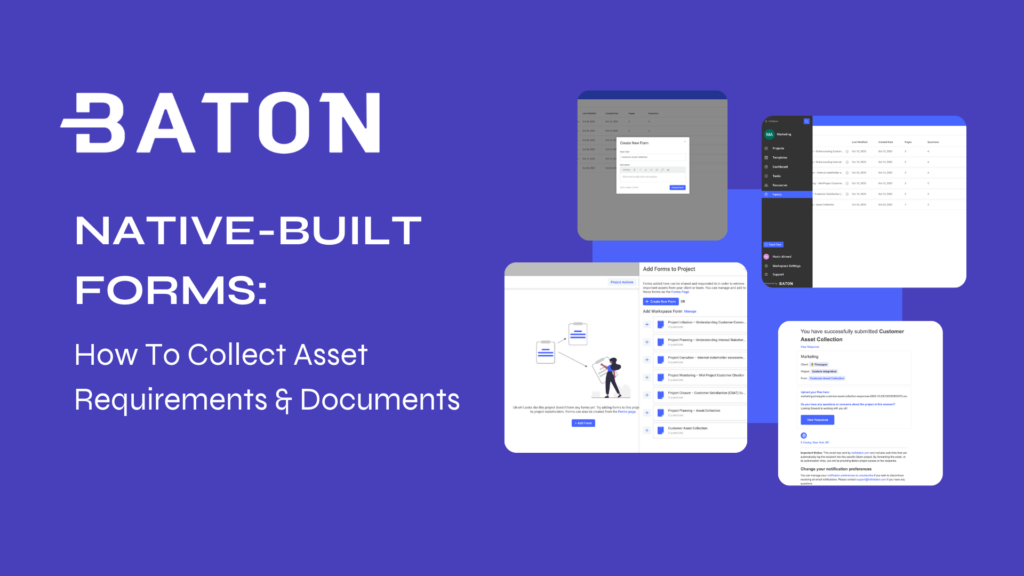In the dynamic landscape of software implementation projects, success hinges on meticulous planning, effective communication, and timely execution. One crucial element often underestimated is the collection of assets and gathering of necessary requirements and documents. Delays in this phase can trigger a domino effect, adversely impacting the entire project timeline, costs, and overall success. In this blog post, we will delve into the reasons behind asset collection delays, their ramifications, and strategies to mitigate their impact.
The Foundation: Importance of Assets and Requirements in Software Implementation
The success of any software implementation project is intricately tied to the establishment of a robust foundation and project plan. Central to this foundation are the careful management of assets and the precise definition of requirements, laying the groundwork for seamless development and ensuring the ultimate success of the project from kickoff to completion and beyond.
I. Defining Asset Requirements
Before we delve into the potential pitfalls, let’s establish a common understanding of what we mean by assets and requirements in the context of software implementation. Assets encompass data, files, licenses, configurations, and any other elements essential for the software’s functionality. Requirements, on the other hand, include specifications, user needs, and system expectations, acting as a blueprint for developers and stakeholders.
II. The Role of Assets and Requirements in Project Success
Effective software implementation relies heavily on a well-defined set of assets and requirements. These elements serve as the building blocks, shaping the development process and ensuring that the final product aligns with the intended purpose. Timely access to these resources is critical to maintaining project momentum and achieving the desired outcomes.
Common Causes of Delays in Asset Collection and Requirement Gathering
Navigating the intricacies of software implementation projects often reveals a critical bottleneck: the delayed collection of assets and gathering of requirements. In this exploration, we unravel the common causes that cast shadows on project timelines, hindering the seamless flow of critical resources and essential specifications.
I. Inadequate Planning and Communication
One of the primary reasons for delays in asset collection is insufficient planning. Projects that lack a well-defined roadmap for asset acquisition and requirement gathering often encounter setbacks. Additionally, poor communication among project stakeholders can result in misunderstandings, leading to delays as teams attempt to reconcile conflicting information.
II. Undefined Ownership and Responsibility
Without clear ownership and defined responsibilities for asset collection and requirement gathering, tasks can fall through the cracks. When no specific individual or team is accountable for these crucial aspects, the project may suffer from a lack of direction, coordination, and, ultimately, delays.
III. Changing Project Scope
Scope creep is a common challenge in software implementation projects. As the project evolves, stakeholders may introduce new requirements or modify existing ones, leading to delays in asset collection. These changes require additional time and resources to accommodate, often causing a ripple effect on the project timeline.
IV. Incomplete or Inaccurate Documentation
Inaccurate or incomplete documentation can significantly impede the asset collection and requirement gathering process. If stakeholders provide insufficient information or fail to update documentation as the project progresses, development teams may find themselves backtracking and requesting additional details, leading to delays.
The Domino Effect: Ramifications of Asset Collection Delays
As the gears of a software implementation project turn, delays in asset collection act as the catalyst for a cascading series of repercussions, creating a domino effect that reverberates through the entire development process. In this examination, we dissect the far-reaching ramifications of such delays, shedding light on the challenges and consequences that can jeopardize project success.
I. Extended Project Timelines
The most immediate consequence of delays in asset collection and requirement gathering is an extension of the project timeline. Missed deadlines can disrupt subsequent phases of development, testing, and deployment, leading to a cascade of delays that jeopardize the project’s overall success.
II. Increased Costs
Time is money, and delays in software implementation projects can translate into increased costs. Extended project timelines often result in additional expenses, including prolonged labor costs, extended software licensing fees, and potential penalties for missing contractual deadlines.
III. Diminished Stakeholder Confidence
Repeated delays erode stakeholder confidence. Whether internal teams or external clients, stakeholders expect software projects to adhere to agreed-upon timelines. When delays occur due to challenges in asset collection and requirement gathering, it can breed skepticism and erode trust in the project’s ability to deliver on its promises.
IV. Quality Compromises
Rushing through subsequent project phases to compensate for delays in asset collection can compromise the quality of the software. Insufficient time for thorough testing and validation increases the risk of bugs, security vulnerabilities, and suboptimal performance, ultimately impacting the end-user experience.
Strategies to Mitigate Delays and Ensure Smooth Asset Collection
Amidst the complex landscape of software implementation, the specter of delays in asset collection looms large, posing a formidable challenge to project timelines. In this segment, we explore strategic approaches designed to navigate and mitigate these delays, ensuring a seamless and efficient process for collecting assets and maintaining project momentum.
I. Comprehensive Project Planning
Start with a robust project plan that includes a detailed timeline for asset collection and requirement gathering. Clearly define tasks, allocate responsibilities, and establish milestones to ensure that all stakeholders are on the same page.
II. Clearly Defined Ownership and Responsibilities
Assign specific ownership and responsibilities for asset collection and requirement gathering. Designate a project manager or a dedicated team to oversee these tasks, ensuring accountability and a streamlined process.
III. Agile Methodologies
Implementing agile methodologies can provide a more flexible framework for handling changing requirements. Agile allows for iterative development, making it easier to accommodate modifications and additions to assets and requirements without causing significant delays.
IV. Continuous Communication and Collaboration
Establish open channels of communication among all stakeholders. Regular meetings, status updates, and collaborative tools can facilitate real-time information sharing, minimizing the chances of miscommunication and ensuring that assets and requirements are collected promptly.
V. Thorough Documentation
Emphasize the importance of thorough and accurate documentation from the project’s inception. Encourage stakeholders to provide detailed information and to update documentation as the project progresses, reducing the risk of delays caused by incomplete or inaccurate data.
Don’t Let An Asset Collection Snafu Derail Your Next Implementation Project
In the intricate dance of software implementation projects, the timely collection of assets and gathering of requirements stand as the foundation for success. Delays in this crucial phase can trigger a series of setbacks that compromise project timelines, increase costs, and diminish stakeholder confidence. By understanding the common causes of delays and implementing strategies to mitigate their impact, project teams can navigate the challenges of asset collection and requirement gathering, ensuring a smoother and more successful software implementation journey.
Never Kick Off a Project Without All Necessary Client Assets
Learn how Baton’s native-built forms feature streamlines the collection of asset requirements and documents.




